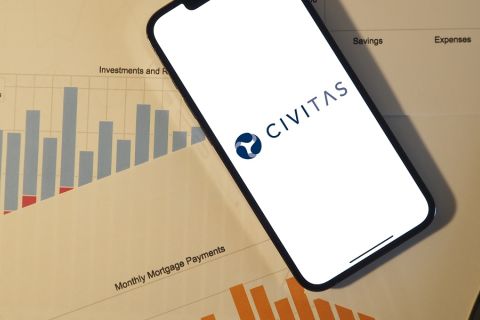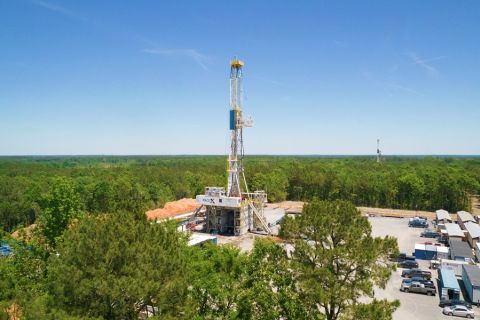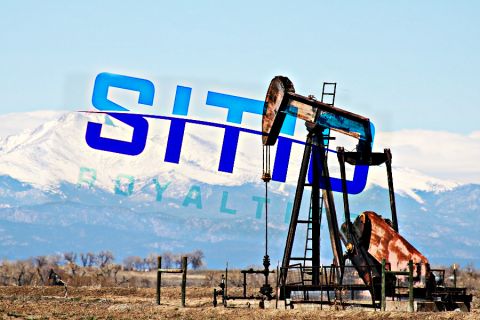Computer technology often advances faster than our mental ability to imagine the new opportunities it provides. It took the exploration industry awhile to realize that digitizing their work meant more than transferring their colored-pencil drawings to a computer monitor. And it has taken training companies awhile to move beyond the “manual in a monitor” to truly harness the power of these machines to help people learn more quickly and thoroughly.
The concept of “e-learning” has become popular in the oil patch, and countless geoscientists and engineers have logged into their systems to take the required training. But the ability of computer software to provide animation, voice-overs, enlargements and simulations is increasingly being used to not only tick the training box but deliver more effective ways to educate.
Kevin Keable is the founder of Oilennium (now part of Petrofac), a company that has specialized in oil and gas training since its inception. “If you mention our name to people, they’ll say, ‘Oh, yeah—they’re an e-learning company,’” Keable said. “But really our specialty is taking any subject matter and turning it into something that’s easy to learn and easy to remember. It doesn’t matter if the delivery is online or classroom-based—turning it into effective learning is what’s important.”
Keable said that the use of graphics and animation is at the heart of this strategy. “Most of the downhole tools that you see look the same from the outside,” he said. “We take them apart and animate them so learners can really get to grips with what’s going on inside.” The company also builds simulators with which students can interact.
“If people learn in an easier fashion, they tend to remember those pictures and interactions more than if we just tell them the information.”
Taking it to the field
While many companies take advantage of Internet-based training, connections can’t always be trusted in remote locations and offshore, “which is where most of the oil and gas is found,” he said. Oilennium has come up with mobile solutions such as small servers or memory sticks that don’t require an Internet connection but are still able to deliver high-quality, graphic-heavy modules. Quite soon these training modules will be available on tablets and smartphones, too.
One of the key benefits of e-learning is the number of people who can be trained. Keable said that one set of courses was implemented about a year ago within one specific company and allocated to about 1,000 employees. “Within three months 14,000 people had logged onto it because it was so good, and it was freely available,” he said. “To train 14,000 people in a classroom at the rate of one class per week would be a 20-year, multimillion-dollar project. We did it in three months for less than $10 per person.”
These types of trends, he added, mean that learning can be made available to many more people. Client demand also is pushing a move toward analogies, scenarios and simulations. “In the past e-learning was simply putting text on screen,” he said. “You could put a presentation online, so companies did just that. But there’s no real teaching in that. People just read it, so they may as well have been given a manual.
“This new trend is all about teaching people new information in a way that’s fun and easy to learn and getting it to stick in their minds.” Relevant analogies, good graphics, repetition and great questioning are the important factors in retaining knowledge, he added.
Off to the theater
In addition to these interactive types of training modules, some training companies are moving toward dramatic films and even live theater to get their point across. While this hasn’t yet been thoroughly embraced by the oil industry, these types of training exercises can be hugely beneficial when it comes to behavioral issues like safety training.
“Training for skilled and semi-skilled workers is where we need to make some dramatic changes,” Keable said. “Behavioral safety training is where you can get real engagement, get learners to understand the true consequences of their actions. If you or a colleague gets hurt or worse, what effect will that have on your family?”
While using this type of training can be challenging because the films are quite hard-hitting, Keable noted that one of the films he watched recently actually had a profound effect on his own behavior, even after 30 years in the industry. “It was because of the potential consequences on the family,” he said. “That was the thing that got me, so I modified my behavior, drove more carefully and watched out for others more closely.”
Keep it simple, stupid
Making a difficult concept easier to understand might sound less onerous than the opposite, but it requires a certain skill set. “Imagine trying to explain deepwater drilling to someone—over the telephone,” he said.
Keable has a well-established routine to train new recruits. Before employees are even hired they are asked to take a creativity assessment. If they pass this test and are subsequently hired, they are immersed in a three-month intensive training course.
“They don’t do any paid work in that time; it’s all training,” he said. “But we’re a training company, so that’s easy. The training doesn’t stop there. We run at least one training course per week and are constantly reviewing one another’s work.”
So far, the system has been foolproof. “We’ve seen a spark of creativity in them, so we develop and enhance that,” he said. “It’s common for our staff to be requested to stay on a particular client’s project. In fact, one recent hire, who is only 22, impressed a major drilling contractor enough with his technical project that the company wants to use him from now on.”
Another successful project that relies heavily on simulation is a pipeline pig launcher. Keable said that students have to follow all of the steps of opening and closing valves in the correct sequence in the virtual space. It tracks their mistakes and gives feedback, so if they overpressure the equipment, something’s going to blow. It’s noisy and very realistic.
“If you do it correctly, it will allow you to launch the pig into the pipeline,” he said. “That sort of thing is so close to real-life operations that you really can teach people all of the elements of that operation short of getting their hands on a valve and operating it themselves.”
Competence
Keable noted that the move toward “competence” has had a tendency to backfire in certain segments of the industry due to the lack of understanding and overly complex nature of some systems. “My personal opinion is that there can never be one real industry standard,” he said. “Some parts of the industry and some people need more competence assessments than others.”
The main problem with this sort of process is that it can become so detailed and, therefore, time-consuming that people are never proved competent. “Competence is a growing requirement, and I think the industry needs to work hard to understand exactly what form it should take,” he said.
The post-Macondo Big Crew Change upstream world also needs to focus more on its hands-on employees, who may get a lot of compliance and safety training but not much actual training in what they need to do their jobs.
“The graduate programs are good,” Keable said. “Geophysicists receive very good training in universities. But the mid-level technicians need more training in what they do.”
Computer technology, tablets and the Internet will continue to evolve faster than humans can keep up. But training investment needs to keep pace as best it can.
“For now, the investment in training should be in understanding the psychology of training and the practical requirements of ensuring that people are competent, putting more emphasis on better training rather than using computers just for the varied forms of delivery technology,” Keable said. “How do you train people more cost-effectively to do the job that they are expected to do and enhance performance? That’s where I would concentrate my efforts.”
Recommended Reading
EIA: E&P Dealmaking Activity Soars to $234 Billion in ‘23
2024-03-19 - Oil and gas E&Ps spent a collective $234 billion on corporate M&A and asset acquisitions in 2023, the most in more than a decade, the U.S. Energy Information Administration reported.
Civitas, Prioritizing Permian, Jettisons Non-core Colorado Assets
2024-02-27 - After plowing nearly $7 billion into Permian Basin M&A last year, Civitas Resources is selling off non-core acreage from its legacy position in Colorado as part of a $300 million divestiture goal.
An Untapped Haynesville Block: Chevron Asset Attracts High Interest
2024-04-03 - Chevron’s 72,000-net-acre property in Panola County, Texas is lightly developed for the underlying Haynesville formation — and the supermajor may cut it loose.
Sitio Royalties Dives Deeper in D-J with $150MM Acquisition
2024-02-29 - Sitio Royalties is deepening its roots in the D-J Basin with a $150 million acquisition—citing regulatory certainty over future development activity in Colorado.
Hess Pushes Shareholders to Vote in Favor of $53B Chevron Merger
2024-04-01 - Hess Corp.’s board is unanimously recommending its shareholders vote in favor of the proposed $53 billion all-stock merger with Chevron Corp., according to Chevron’s March 28 Securities and Exchange Commission filing.





